Photos by Wendy Zhang, (Yale University), Student Correspondent for CET Taiwan, Summer 2022
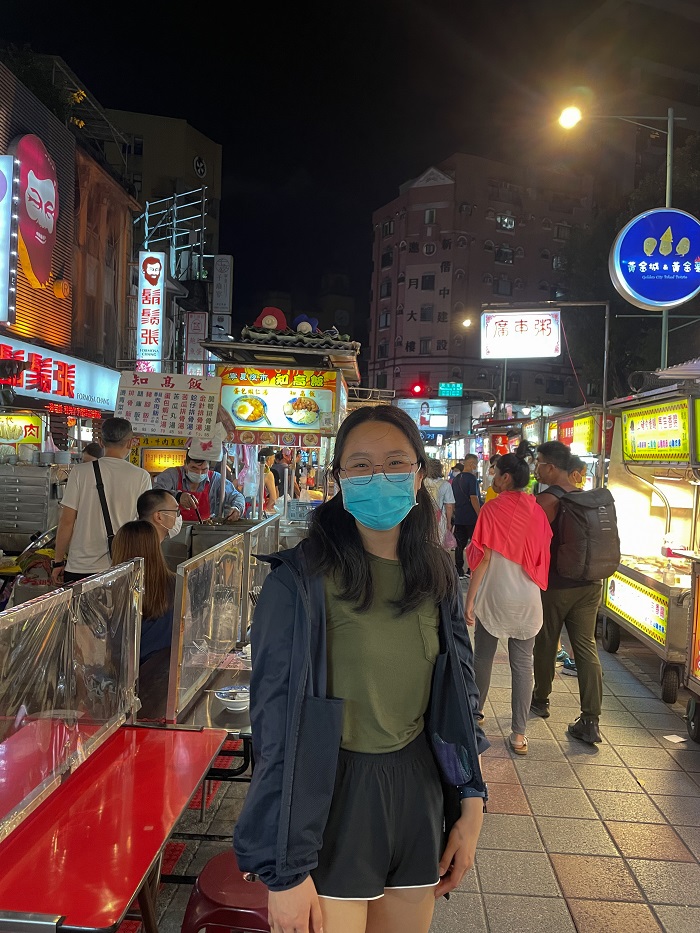
These past two weeks, I had the chance to explore several Taiwanese night markets. If you
haven’t ever been to a Taiwanese 夜市(night market), your first experience might be
overwhelming. With so many options and stalls to choose from, you could eat at a night market every dinner and still have more to try. Especially on weekend nights, night markets are crowded with people of all ages looking for小吃 (street food). Stalls are packed up right next to each other, designed in a way so that you can order a bite of 甜不辣 (Taiwanese oden) from one, 木瓜牛奶 (fresh papaya milk) from their neighbor, and 豆花 (sweet tofu pudding) a few stalls down. While it’s certainly possible to go to a night market by yourself, it’s more fun to go with friends— so you can try more food!
This photo of me was taken at 寧夏夜市 (Ningxia night market) by Cece Sheng. Ningxia night market is located in Datong district and very convenient to commute to via the MRT.
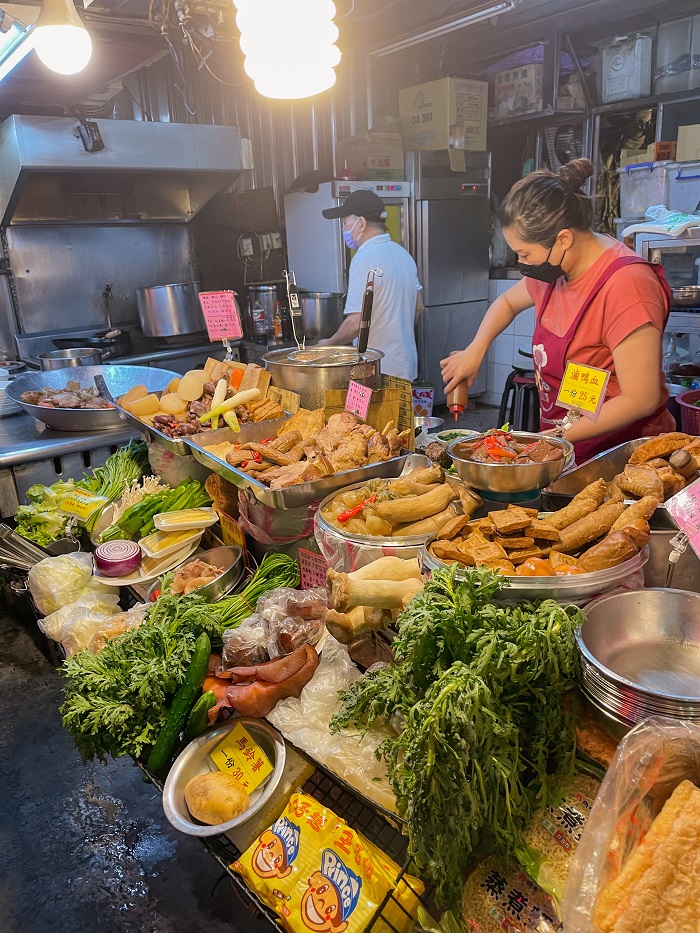
Night markets in Taiwan vary based on their location— some of them, like 遼寧街夜市
(Liaoning street market) are very small, so there are still some cars that pass by on the streets. While there are less options at a smaller night market, you can definitely still find what you’re craving for. This stand sells 滷味, where you can put your desired vegetables/meat/tofu/noodles into a bowl, which is then braised in a sauce for you. The price of your bowl is based on the amount and types of toppings you choose— but whatever you choose, it’ll be very yummy.
As an American, I’ve found that the term “night market” is deceiving, since they close down pretty early in the night— most of them are closed or start winding down at around 11pm. So if you’re craving a midnight snack, just search for your nearest 小七 (7-Eleven) or 全家 (Family Mart), open 24/7.
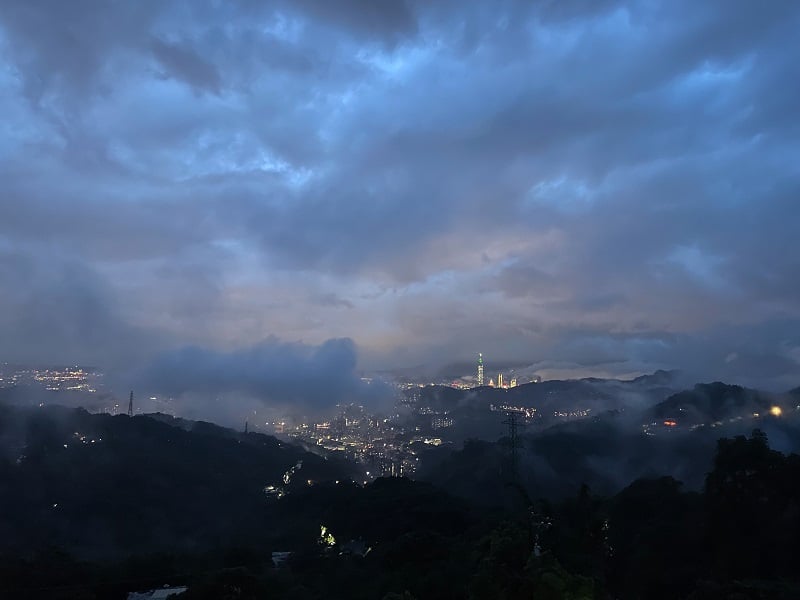
貓空 (Maokong) was formally the largest tea producer in Taipei, but now it remains a peaceful and cute town on the outskirts of the city. After class on a weekday, we visited 貓空 via a 30 minute gondola ride from the Taipei Zoo MRT station. The gondola cabin floor was made of glass, and we could see the forest pass by underneath us. Unsurprisingly, it started pouring as when we reached the top, so we initially had almost no visibility. As we finished tea and dinner, this night time view slowly cleared up, giving us this wonderful view of Taipei 101 and the rest of the city. The same gondola that takes you up and down 貓空 also has stops along temples and the Taipei Zoo, so I’d definitely recommend checking it out as a day trip!
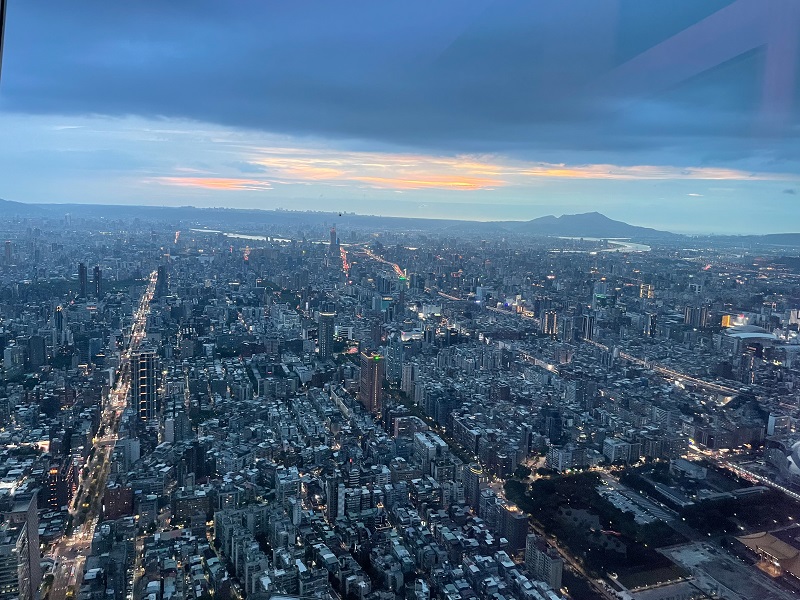
After finishing a very delicious 甜不辣 (Taiwanese fish cake) at 臨江街觀光夜市 (Linjiang Night Market), we caught the sunset from the top of 台北101 (Taipei 101). I’ve never been to the top of the Empire state building, but I imagine it’s quite similar, except for the view of the mountains and the surprising amount of romantic couples photography set-ups. I’ve also noticed that in general, there are many couples everywhere in Taiwan holding hands, riding the bike together, studying together, etc. Forms of public displays of affection (on the more conservative side) can be seen wherever you go in Taipei. A friend that I’ve met from 台大 (National Taiwan University) mentioned that the vast majority of students date in their first-year, which I think is different from the dominant hook-up culture in most US universities.
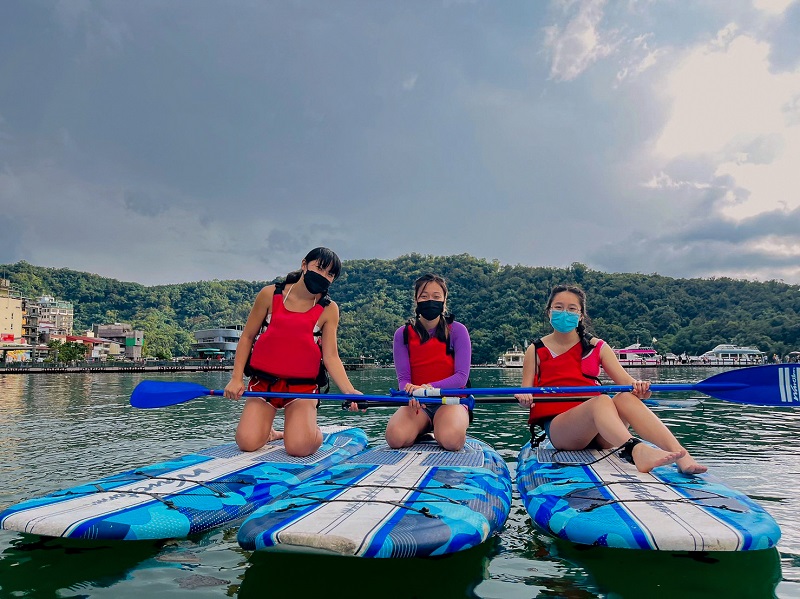
In fourth grade, I learned about 日月潭 (Sun Moon Lake) in Chinese School. We learned that 日月潭, the largest body of water in Taiwan, has a tiny island named Lalu island that splits the lake into “日潭” (Sun Lake) and “月潭” (Moon Lake). The name of the lake comes from the shape of these two halves, forming日月潭. When the sun is out, the alpine lake is almost turquoise in color. Unsurprisingly (again), we were caught in a severe thunderstorm, so we waited took shelter paddleboard stand for an hour. When the sky inevitably cleared up, we went paddle boarding, and we saw a perfect rainbow arching across the mountains. At night, we watched the sun set on the lake and the stars come out, and we met local retirees fishing recreationally in solitude with the peaceful lake. This picture was taken by a paddleboard rental employee, who was so kind to take a picture for us (and for free!).
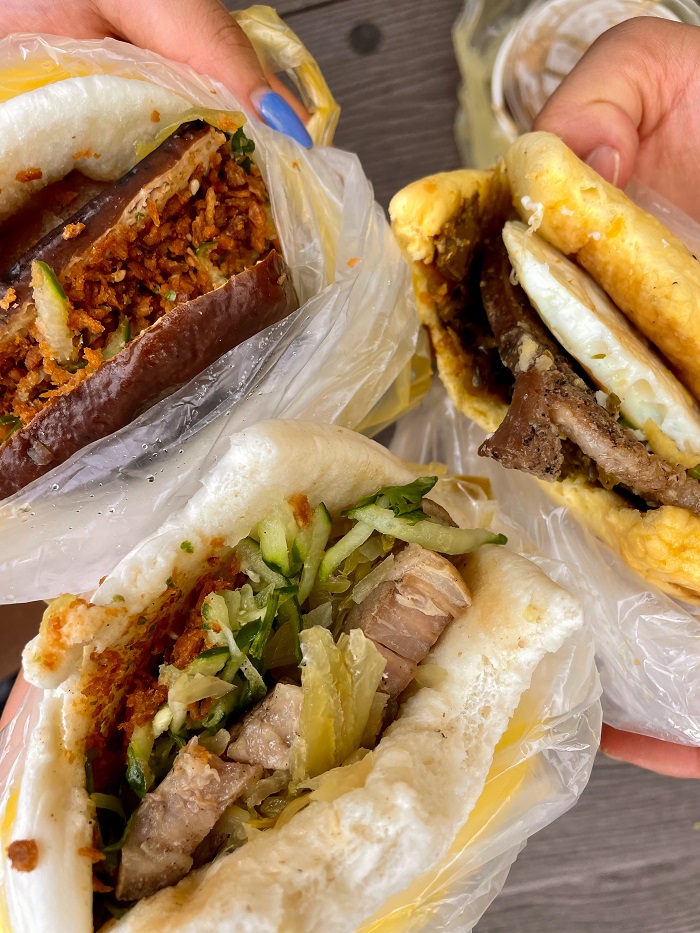
After a day at 日月潭, we decided that one night was not enough to fully explore the lake. I’m especially glad we did because I got to come back to this刈包 (pork belly bun) stand called “東 東” at Ita Thao. It’s possibly one of the most yummiest foods I’ve had in a while. 刈包 (pork belly buns) are a Taiwanese staple street food. Pictured on the top left is a 總匯刈包 which is braised pork belly, pickled vegetables, braised tofu, shredded cucumber, and crushed peanuts inside of a fluffy white bun. The other two 刈包 are variations—the one on the right also has a friend egg inside and egg incorporated in the bun. I was so excited to eat that I couldn’t help myself but take a few bites of the piping hot 刈包 before taking this picture. 日月潭 is also known for a lot of other delicacies like 阿薩姆紅茶(Assam Oolong No.19), 高麗菜包 (Fried Cabbage Buns), and 山豬肉 (wild boar meat), which are also very yummy but not quite as good as the 刈包— but I will say, it’s hard to beat this 刈包.
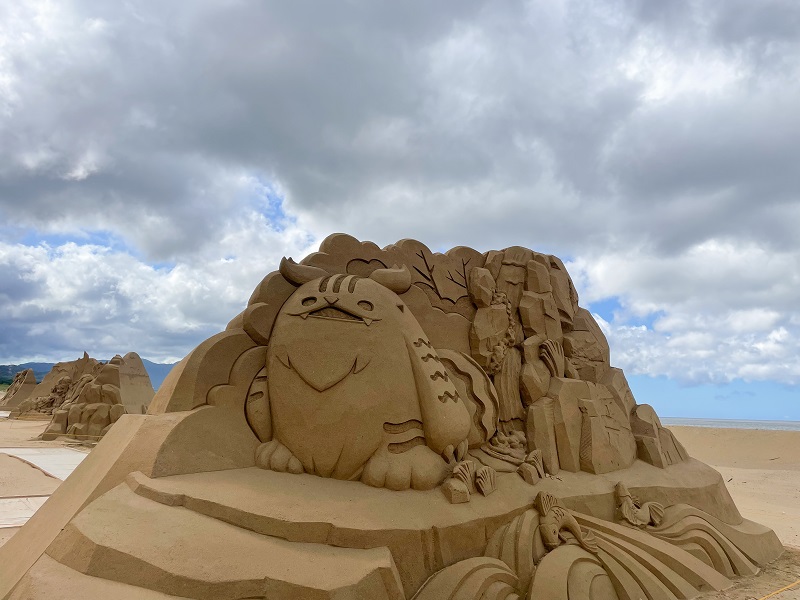
Another day after class, we visited福隆 (Fulong). It’s a relatively easy day trip because you can catch the train after class from Taipei Main Station or Songshan Station at around 1:30pm, have their famous 便當 (bento box) for lunch, enjoy the afternoon at the beach, and bike before sunset. Pictured is one of their famous sand castle sculptures, which turned out to actually be a major disappointment once we saw that it was more of a wood-structure with a thin layer of sand over it. Regardless, the water was crystal clear and very refreshing to swim in, and the bike path gives you a beautiful view of the ocean and neighboring mountains. The beach was not crowded since we went on a weekday, which is probably the best time to go.

We recently started in-person Chinese classes, which has made class so much more engaging and interesting. My class has 7 students— some CET and some here without a program— and I’ve really liked getting to know my classmates better in person. I have class every weekday from 8:20am – 11:10am, which means that I usually leave home with my roommates at 7:30am to catch the bus. It’s been difficult getting up earlier, but it’s certainly worth it.
The 國立臺灣大學社會科學院圖書館 (Social Sciences Library) right next to the Chinese Learning Department is my favorite study spot on campus. From the second floor, there is wonderful natural light and plenty of individual study spaces. Of the few that I’ve explored, the Social Sciences Library is still my favorite. On days where I’m not doing anything after class, I come here to study, chill, or take a nap on their second floor wave-shaped nap-couches. The libraries are less busy than usual because most students aren’t on campus during the summer, but there are still plenty of people studying and on the nap couches— this is definitely a part of college culture that I wish existed at my home college.
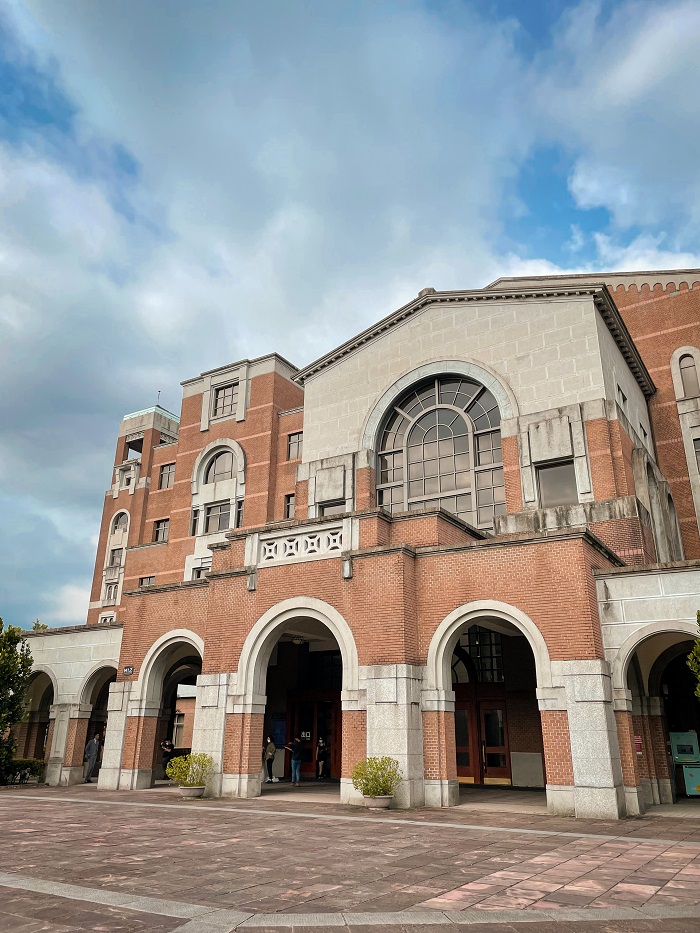
One of the challenges that come with being a study abroad student is balance. I feel like I am simultaneously a tourist and a student, and it is such a strange feeling especially during summertime. A part of me feels like I need to be busy all the time to take advantage of the limited time I have. One way that I’ve been trying to stay balanced is by keeping my day-trips and day-to-day activities more spontaneous and based on what I want to do in the moment, rather than what I feel like I should do.
Pictured to the left is the NTU main library, located at the end of a palm-tree lined street. It’s also located right next to the main cafeteria, about a 10 minute walk away from the Chinese Learning Department. As a foreign student in NTU, you have access to all the NTU libraries and over 10 museums on campus via your extension ID, which can be an informative study break if you’re looking for something to do on campus.
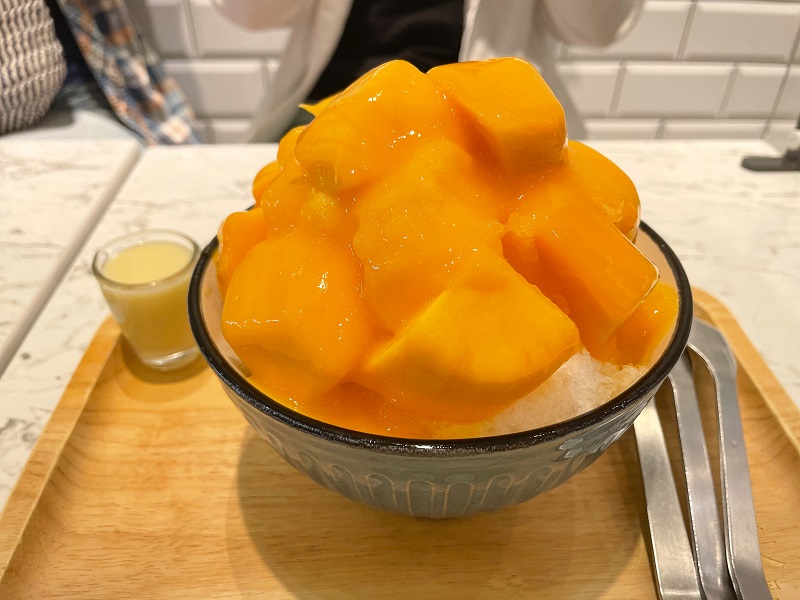
This is 芒果冰沙 (Mango shaved ice)— a large bowl of shaved ice served with fresh 愛文芒果 (Irwin Mango) and sweetened condensed milk for a light drizzle. Because of the Taiwan summer heat, I find myself craving this almost every day. My teacher told us that unlike 奶茶 (milk tea), which you can find anywhere in Taipei within a 5 minute walk, 冰沙 (shaved ice) is less of an everyday dessert, so it is on the more expensive side (200 NTD / $7 USD). But if anything, this is still an impossible price in America. This is a truly glorious dessert, and there are no words that can really describe how yummy this is.